Your bedroom is more than just a place to sleep—it’s your sanctuary, your personal retreat from the world. The flooring you choose plays a crucial role in creating the perfect ambiance for rest and relaxation. Whether you’re building a new home, renovating your current bedroom, or simply looking to upgrade your existing floor, this comprehensive guide will walk you through everything you need to know about bedroom flooring options.
In this article, we’ll explore popular bedroom flooring materials, weigh their pros and cons, discuss installation and maintenance considerations, and share design ideas to help you make the best choice for your space. From cozy carpets to elegant hardwood, from budget-friendly laminate to luxurious natural stone, we’ve got you covered with all the information you need to make an informed decision.
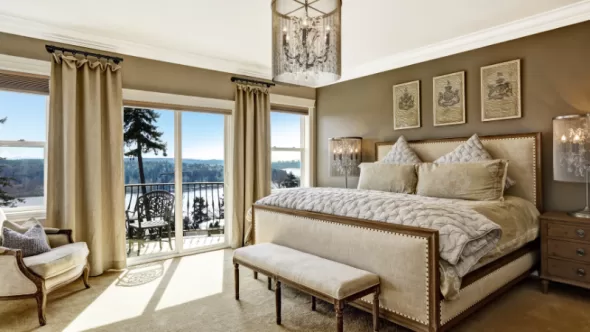
Let’s step into the world of bedroom flooring and discover what option might be the perfect fit for your home and lifestyle!
What to Consider When Choosing Bedroom Flooring
Before diving into specific flooring options, it’s important to think about several key factors that should influence your decision:
1. Comfort and Warmth
Since your bedroom is where you begin and end each day—often barefoot—comfort is paramount. How does the flooring feel underfoot? Is it warm and welcoming on cold mornings, or cool and refreshing in summer months? Some materials, like carpet and cork, naturally provide more cushioning and insulation than harder surfaces like tile or concrete.
2. Noise Reduction
A peaceful bedroom environment promotes better sleep. Consider how much noise your flooring absorbs or reflects. Soft flooring options like carpet significantly reduce noise, while harder surfaces may allow sound to echo or transmit footsteps to rooms below.
3. Durability and Maintenance
How long do you want your flooring to last, and how much time are you willing to spend maintaining it? Some materials require regular special care, while others are virtually maintenance-free. Think about your lifestyle and cleaning preferences when making your choice.
4. Allergies and Air Quality
If you or family members have allergies or respiratory concerns, your flooring choice can significantly impact indoor air quality. Some floors harbor fewer allergens and are easier to keep truly clean.
5. Budget Considerations
Flooring costs vary dramatically not just in materials but in installation requirements. Consider both the upfront investment and long-term value when budgeting for your new bedroom floor.
6. Style and Design
Your bedroom floor creates the foundation for your entire room design. Consider how different flooring options complement your existing décor or the new style you’re aiming to achieve.
7. Environmental Factors
If sustainability matters to you, research the environmental impact of different flooring materials, from how they’re sourced to their eventual disposal or recyclability.
Now, let’s explore the most popular bedroom flooring options, examining their benefits, drawbacks, and best applications.
Popular Bedroom Flooring Options
Carpet: The Classic Comfort Choice
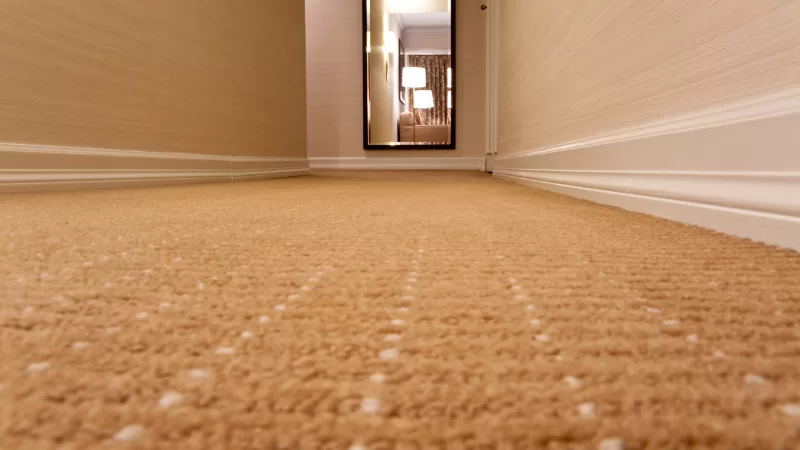
Carpet remains one of the most popular choices for bedroom flooring, and for good reason. It offers unmatched comfort, excellent sound absorption, and comes in countless colors, patterns, and textures to suit any design style.
Benefits of Carpet in Bedrooms:
- Supreme comfort: Provides cushioning and warmth underfoot
- Excellent insulation: Helps maintain room temperature and reduces energy costs
- Superior sound absorption: Minimizes noise for a quieter sleep environment
- Safety: Reduces risk of slips and cushions falls
- Affordability: Options available at virtually every price point
Drawbacks to Consider:
- Maintenance challenges: Requires regular vacuuming and occasional deep cleaning
- Allergen concerns: Can trap dust, pet dander, and other allergens
- Staining potential: Some fibers are prone to staining
- Shorter lifespan: Typically needs replacement sooner than hard flooring options
Types of Carpet for Bedrooms:
1. Cut Pile Carpet Cut pile carpet features fibers that are cut at the ends, creating a soft, plush surface. Common varieties include:
- Plush/Velvet: Densely packed, creating a formal, velvet-like appearance
- Saxony: Similar to plush but with slightly twisted fibers for better durability
- Textured: Has fibers of varying heights, which helps hide footprints and vacuum marks
- Frieze: Highly twisted fibers that create a casual, “curly” appearance
2. Loop Pile Carpet Loop pile carpet has uncut fiber loops, offering excellent durability but typically less softness:
- Berber: Features thick, chunky loops with flecks of color
- Level Loop: Uniform loop height for a consistent appearance
- Multi-Level Loop: Varying loop heights create patterns and texture
3. Cut and Loop Pile This style combines both cut and looped fibers to create patterns and textures, offering a distinctive look that can add visual interest to your bedroom.
Best For:
Carpet is ideal for bedrooms where comfort and quiet are priorities, especially in colder climates. It’s particularly well-suited for master bedrooms, children’s rooms, and guest rooms.
Hardwood: Timeless Elegance

Hardwood flooring brings natural beauty and timeless appeal to any bedroom. Available in numerous wood species, finishes, and installation patterns, hardwood floors can complement virtually any design style from traditional to contemporary.
Benefits of Hardwood in Bedrooms:
- Timeless appeal: Never goes out of style
- Longevity: Can last for generations with proper care
- Increases home value: Consistently appeals to future buyers
- Hypoallergenic qualities: Doesn’t harbor dust or allergens
- Refinishing potential: Can be sanded and refinished multiple times
Drawbacks to Consider:
- Higher cost: Initial investment is significant
- Cold underfoot: Lacks the warmth of carpet
- Noise concerns: Can be noisy and echo-prone
- Moisture sensitivity: Can warp or damage with excessive humidity
- Maintenance requirements: Needs proper care to maintain appearance
Types of Hardwood for Bedrooms:
1. Solid Hardwood Made from single pieces of wood, solid hardwood is the traditional choice:
- Oak: Extremely durable with pronounced grain patterns
- Maple: Offers a clean, contemporary look with subtle grain
- Cherry: Develops a rich, reddish patina over time
- Walnut: Provides deep, chocolate tones for a luxurious feel
- Hickory: Features dramatic grain patterns and exceptional hardness
2. Engineered Hardwood Constructed with a real wood veneer over multiple layers of substrate:
- Better stability in environments with humidity fluctuations
- Often less expensive than solid hardwood
- Wider range of installation options
- May have fewer refinishing opportunities
3. Finished vs. Unfinished
- Pre-finished: Factory-applied finish for immediate use after installation
- Site-finished: Installed raw and finished on-site for a completely uniform appearance
Best For:
Hardwood flooring works beautifully in master bedrooms, guest rooms, and adult bedrooms. It’s especially appropriate in homes with an open, flowing floor plan where consistent flooring creates visual continuity.
Laminate: Practical and Affordable
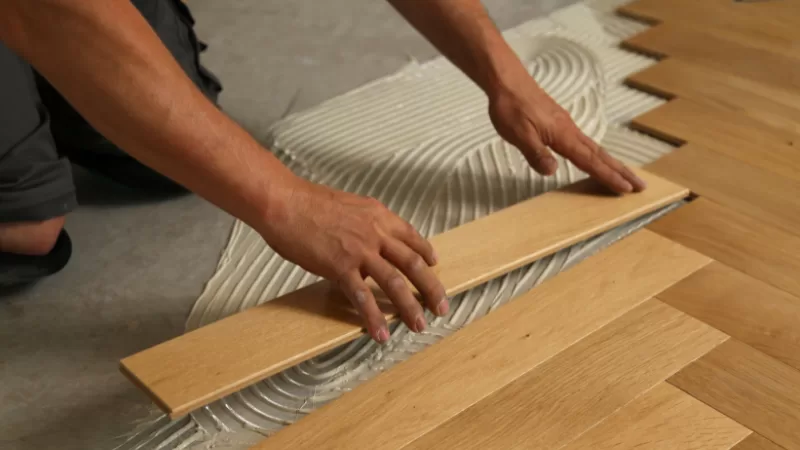
Laminate flooring offers the look of hardwood or stone at a fraction of the cost. Modern manufacturing techniques have vastly improved its appearance and performance, making it a compelling option for many homeowners.
Benefits of Laminate in Bedrooms:
- Budget-friendly: Significantly less expensive than the materials it mimics
- Durability: Resistant to scratches, dents, and fading
- Easy installation: Many systems designed for DIY-friendly installation
- Low maintenance: Simple cleaning requirements
- Wide variety: Available in countless designs and appearances
Drawbacks to Consider:
- Cannot be refinished: Must be replaced when damaged
- Potential sound issues: Can create hollow sounds when walked upon
- Feel underfoot: Lacks the natural warmth and texture of real wood
- Moisture vulnerability: Some products can be damaged by excessive moisture
- Resale perception: May be viewed less favorably than natural materials by buyers
Types of Laminate for Bedrooms:
1. By Thickness
- 8mm-10mm: Standard residential quality
- 12mm-14mm: Premium options with better sound absorption and feel
2. By Installation Method
- Click-Lock/Floating: Pieces snap together and “float” over the subfloor
- Glue-Down: Adhered directly to the subfloor for more stability
3. By Appearance
- Wood Look: Mimics various wood species and finishes
- Stone Look: Resembles natural stone or tile
- Distinctive Designs: Creative patterns not found in nature
Best For:
Laminate is particularly well-suited for bedrooms in rental properties, first homes, children’s rooms, and spaces where budget is a primary concern but appearance remains important.
Luxury Vinyl: The Versatile Performer
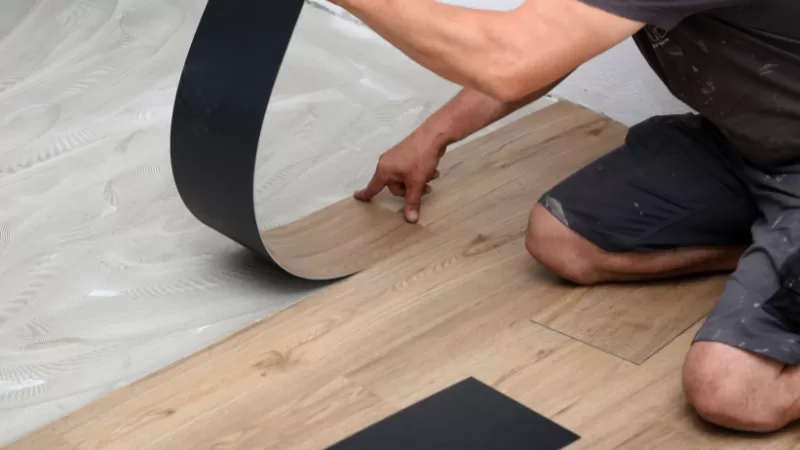
Luxury vinyl flooring has revolutionized the flooring industry with its remarkable combination of beauty, durability, and affordability. Available in both plank (LVP) and tile (LVT) formats, luxury vinyl can convincingly mimic hardwood, stone, or ceramic tile.
Benefits of Luxury Vinyl in Bedrooms:
- Water resistance: Most products are completely waterproof
- Comfort underfoot: Warmer and more yielding than tile or stone
- Durability: Highly resistant to scratches, dents, and stains
- Easy maintenance: Simple to clean and maintain
- Affordability: Excellent value compared to the materials it mimics
Drawbacks to Consider:
- Environmental concerns: Made from non-renewable petroleum products
- Cannot be refinished: Must be replaced when worn or damaged
- Potential off-gassing: Some products may temporarily emit VOCs
- Sun damage: Can fade or warp with prolonged direct sunlight
- Resale perception: May not add as much value as natural materials
Types of Luxury Vinyl for Bedrooms:
1. Luxury Vinyl Plank (LVP) Designed to resemble hardwood planks with realistic textures and appearances.
2. Luxury Vinyl Tile (LVT) Mimics the look of natural stone or ceramic tile, often including embossed textures.
3. Construction Types
- Rigid Core/SPC: Solid polymer core provides excellent stability and dent resistance
- WPC: Wood plastic composite core offers more comfort underfoot
- Flexible/Glue-Down: Traditional vinyl that adheres directly to the subfloor
Best For:
Luxury vinyl is an excellent choice for bedrooms where practical concerns like moisture resistance, easy maintenance, and durability are priorities. It’s especially suitable for ground-floor bedrooms, homes with pets, and bedrooms with en-suite bathrooms.
Cork: Natural Comfort and Sustainability
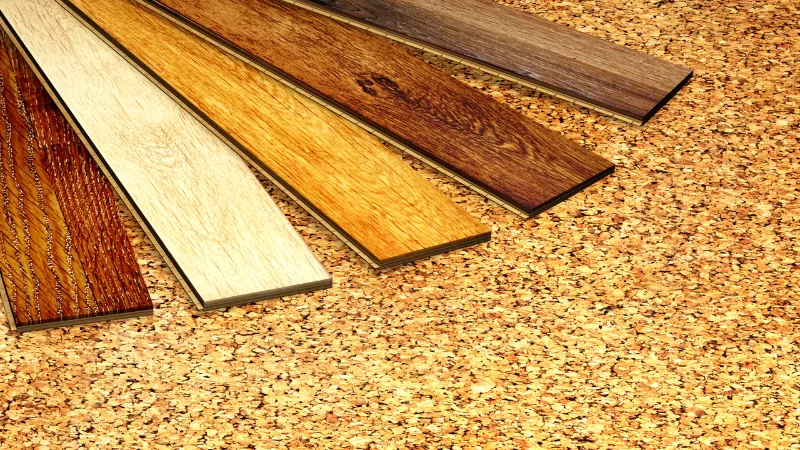
Cork flooring offers a unique combination of environmental benefits and practical features that make it an interesting option for bedroom spaces.
Benefits of Cork in Bedrooms:
- Natural cushioning: Provides gentle give underfoot
- Thermal insulation: Maintains warmth naturally
- Sound absorption: Excellent noise reduction qualities
- Hypoallergenic properties: Naturally resistant to mold, mildew, and allergens
- Sustainability: Harvested from living trees without harm
Drawbacks to Consider:
- Susceptibility to damage: Can be dented by heavy furniture
- Fading potential: May fade with prolonged sun exposure
- Moisture issues: Can be damaged by excessive moisture
- Regular maintenance: Requires periodic resealing
- Limited availability: Fewer style options than more common flooring types
Types of Cork for Bedrooms:
1. Cork Tiles Individual squares typically 12″x12″ or 24″x24″ that can be arranged in patterns.
2. Cork Planks Rectangular pieces that often click together for floating installation.
3. Finishes
- Natural/Matte: Subtle, organic appearance
- Stained: Available in various colors
- Printed: Can have patterns or designs applied to the surface
Best For:
Cork flooring works wonderfully in bedrooms where natural materials, comfort, and sound absorption are priorities. It’s particularly well-suited for bedrooms above living spaces where noise transmission is a concern.
Ceramic and Porcelain Tile: Durable and Low-Maintenance
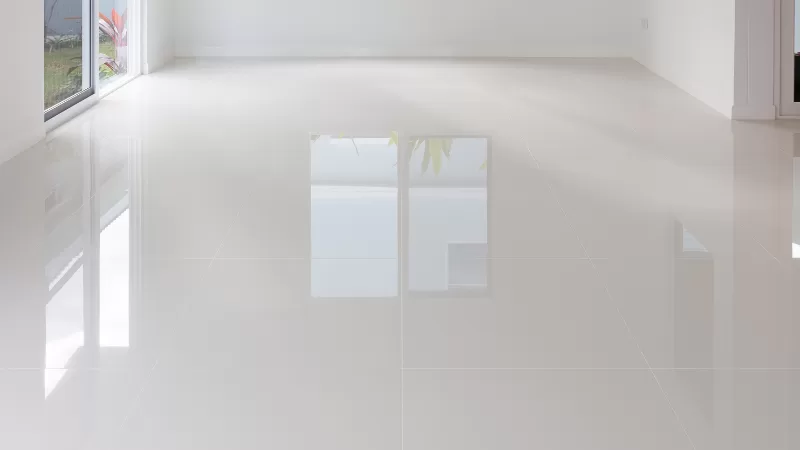
While not traditionally the first choice for bedrooms in most of the US, tile flooring offers unmatched durability and easy maintenance that makes it worth considering, especially in warmer climates.
Benefits of Tile in Bedrooms:
- Exceptional longevity: Can last for decades with minimal wear
- Easy cleaning: Simple to maintain and keep truly clean
- Hypoallergenic qualities: Doesn’t harbor allergens or dust mites
- Cooling properties: Maintains lower temperatures in hot weather
- Unlimited design options: Available in countless colors, patterns, and finishes
Drawbacks to Consider:
- Cold underfoot: Uncomfortably cool in winter months
- Hardness: Unforgiving surface for falls or dropped items
- Installation complexity: Requires professional installation for best results
- Grout maintenance: Grout lines can stain and require cleaning
- Cost concerns: Quality tile with professional installation can be expensive
Types of Tile for Bedrooms:
1. Ceramic Tile Clay-based tiles that are fired in a kiln, available in glazed (with a protective top layer) and unglazed varieties.
2. Porcelain Tile Similar to ceramic but fired at higher temperatures, making them denser and more durable:
- Through-body porcelain: Same color throughout
- Glazed porcelain: Pattern or color applied to the surface
3. Format Options
- Traditional squares: Classic appearance
- Large-format tiles: Modern look with fewer grout lines
- Wood-look planks: Combines the appearance of wood with the durability of tile
Best For:
Tile flooring is ideal for bedrooms in warm climates, homes with radiant floor heating systems, or bedrooms with attached bathrooms where moisture control is important.
Engineered Bamboo: Eco-Friendly Innovation
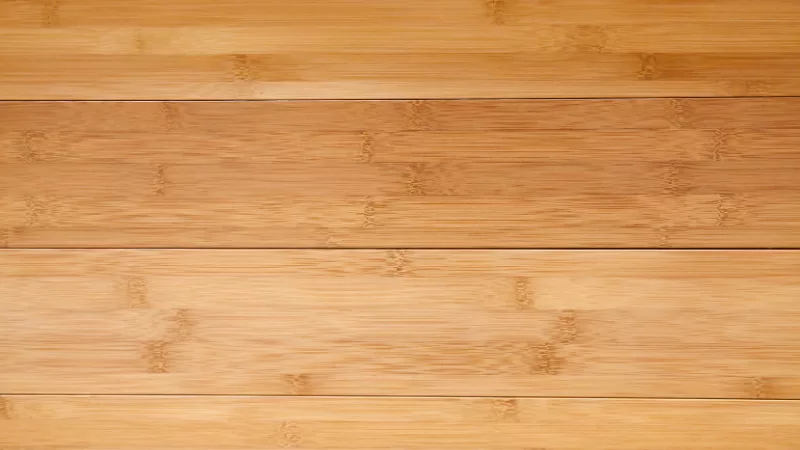
Bamboo flooring has gained popularity as a sustainable alternative to hardwood that offers a distinctive look and comparable performance.
Benefits of Bamboo in Bedrooms:
- Environmental sustainability: Rapid-growing renewable resource
- Unique appearance: Distinctive grain patterns and color options
- Durability: Comparable to or exceeding many hardwoods
- Moisture resistance: Better performance in humid conditions than hardwood
- Value proposition: Often less expensive than similar-quality hardwood
Drawbacks to Consider:
- Quality variations: Significant differences between brands and products
- Scratching potential: Can be scratched by furniture, high heels, or pet claws
- Limited refinishing: Fewer refinishing opportunities than solid hardwood
- Chemical concerns: Some products use adhesives with potentially harmful VOCs
- Humidity sensitivity: Can still be affected by extreme moisture conditions
Types of Bamboo for Bedrooms:
1. Strand-Woven Bamboo Created by compressing bamboo fibers under extreme pressure, resulting in exceptional hardness.
2. Horizontal/Vertical Bamboo
- Horizontal: Shows the characteristic bamboo “knuckles” prominently
- Vertical: Presents a more uniform, linear appearance
3. Engineered Bamboo Similar to engineered hardwood, with a bamboo veneer over substrate layers.
Best For:
Bamboo flooring is an excellent choice for environmentally-conscious homeowners who want a distinctive look with good durability. It works well in most bedroom settings, particularly in contemporary or Asian-inspired designs.
Concrete: Modern Industrial Chic

Finished concrete has emerged from its utilitarian origins to become a sought-after flooring option in contemporary homes, offering industrial chic with practical benefits.
Benefits of Concrete in Bedrooms:
- Unmatched durability: Virtually indestructible with proper finishing
- Thermal mass: Retains and gradually releases heat or coolness
- Design versatility: Can be stained, stamped, polished, or painted
- Allergen-free: Doesn’t harbor dust, dander, or other allergens
- Radiant heat compatibility: Works exceptionally well with in-floor heating
Drawbacks to Consider:
- Hardness: Extremely unforgiving surface
- Cold sensation: Feels cold without heating or area rugs
- Moisture concerns: Requires proper sealing to prevent moisture transmission
- Cracking potential: May develop hairline cracks over time
- Permanence: Difficult and expensive to change later
Types of Concrete for Bedrooms:
1. Polished Concrete Ground and polished to a high shine, often with decorative aggregate exposure.
2. Stained Concrete Treated with acid-based or water-based stains for color variation.
3. Stamped or Textured Concrete Impressed with patterns that mimic other materials like stone or wood.
4. Painted or Epoxy-Coated Concrete Covered with decorative paint or epoxy coatings for unlimited color options.
Best For:
Concrete flooring works best in contemporary, industrial, or minimalist bedroom designs. It’s particularly suitable for ground-floor or basement bedrooms with existing concrete slabs, or in passive solar homes where thermal mass is desirable.
Cost Comparison: Budgeting for Your Bedroom Floor
Understanding the relative costs of different flooring options can help you establish a realistic budget for your bedroom flooring project. Here’s a comparative breakdown of approximate costs per square foot for materials and installation (national averages as of 2025):
| Flooring Type | Material Cost (per sq. ft.) | Installation Cost (per sq. ft.) | Total Average Cost |
|---|---|---|---|
| Carpet | $2-$8 | $1-$3 | $3-$11 per sq. ft. |
| Laminate | $1-$5 | $2-$4 | $3-$9 per sq. ft. |
| Luxury Vinyl | $2-$7 | $2-$5 | $4-$12 per sq. ft. |
| Engineered Hardwood | $4-$10 | $3-$8 | $7-$18 per sq. ft. |
| Solid Hardwood | $5-$15 | $4-$8 | $9-$23 per sq. ft. |
| Cork | $3-$8 | $3-$5 | $6-$13 per sq. ft. |
| Bamboo | $3-$9 | $3-$6 | $6-$15 per sq. ft. |
| Ceramic/Porcelain Tile | $3-$10 | $6-$10 | $9-$20 per sq. ft. |
| Polished Concrete | $3-$12 | $5-$10 | $8-$22 per sq. ft. |
Note: These are general price ranges. Your actual costs may vary based on location, specific product choices, subfloor preparation needs, and other factors.
Additional Cost Considerations:
1. Subfloor Preparation Depending on your existing floor, you may need to budget for:
- Removal of old flooring ($1-$4 per sq. ft.)
- Subfloor repair or replacement ($2-$6 per sq. ft.)
- Leveling compounds or underlayment ($1-$3 per sq. ft.)
2. Transitions and Trim Don’t forget to include costs for:
- Transition strips between different flooring types
- Baseboards or quarter-round molding
- Threshold pieces at doorways
3. Long-Term Considerations Factor in the lifecycle costs:
- Maintenance products and equipment
- Professional cleaning services if needed
- Expected lifespan and replacement timeline
Design Ideas and Trends for Bedroom Flooring
Your bedroom flooring does more than just provide a surface to walk on—it establishes the foundation for your entire room design. Here are some trending approaches to bedroom flooring design:
1. Mixed Materials
Consider combining different flooring materials to define spaces within larger bedrooms:
- Carpet insets: A plush carpet inset under the bed provides comfort where you need it most, while harder flooring elsewhere offers durability and easier cleaning.
- Tile-to-wood transitions: For bedrooms with en-suite bathrooms, transitioning from tile in the wet areas to wood or carpet in the sleeping space creates both visual interest and practical zoning.
2. Statement Patterns
Flooring patterns can add visual interest without overwhelming the space:
- Herringbone or chevron hardwood: These classic patterns add sophistication without being too trendy.
- Large-format tile layouts: Oversized tiles with minimal grout lines create a sleek, contemporary foundation.
- Dramatic carpet patterns: Bold geometric patterns or subtle tone-on-tone designs add interest without requiring additional decoration.
3. Color Trends
The color of your flooring sets the tone for the entire room:
- Greige wood tones: Neither fully gray nor beige, these versatile “greige” floors complement almost any color scheme.
- Bleached or whitewashed woods: Light, airy floors create a sense of spaciousness and tranquility.
- High-contrast looks: Dark floors with light walls (or vice versa) create dramatic, photo-worthy spaces.
4. Sustainability Focus
Eco-friendly options continue to gain popularity:
- Reclaimed wood: Salvaged from old buildings or structures, these floors bring history and character while reducing environmental impact.
- Renewable resources: Cork and bamboo offer sustainable alternatives to traditional hardwoods.
- Low-VOC finishes: Products with minimal chemical emissions improve indoor air quality.
5. Technology Integration
Modern flooring embraces technological advances:
- Radiant floor heating: Increasingly affordable systems work under most flooring types to provide gentle, energy-efficient warmth.
- Smart flooring: Emerging technologies include flooring that can monitor room occupancy or even detect falls in elderly care situations.
- Enhanced durability: Advanced wear layers and finishes extend the life of virtually all flooring types.
Installation Considerations
Whether you’re planning a DIY installation or hiring professionals, understanding the installation process helps you prepare and make informed decisions.
Professional vs. DIY Installation
| Flooring Type | DIY Difficulty | Professional Installation Benefits |
|---|---|---|
| Carpet | Difficult | Proper stretching, seam sealing, professional tools |
| Laminate | Easy to Moderate | Faster completion, proper underlayment, professional transitions |
| Luxury Vinyl | Easy to Moderate | Expert subfloor preparation, seamless appearance |
| Hardwood | Moderate to Difficult | Precision cuts, proper acclimation, expert finishing |
| Engineered Wood | Moderate | Subfloor assessment, moisture testing, proper expansion gaps |
| Cork | Moderate | Proper sealing, expert subfloor preparation |
| Tile | Difficult | Precision layout, waterproofing, proper substrate preparation |
| Concrete (finishing) | Very Difficult | Specialized equipment, expertise in finishing techniques |
Preparation Timeline
For a smooth installation, follow this general timeline:
2-3 Weeks Before:
- Purchase flooring materials (allowing extra for waste)
- Allow materials to acclimate to your home’s environment
- Remove furniture from the room
- Make arrangements for temporary sleeping accommodations if necessary
1 Week Before:
- Remove existing flooring or schedule removal
- Inspect and prepare subfloor
- Address any moisture or leveling issues
Day of Installation:
- Ensure clear access to the bedroom
- Secure pets away from the work area
- Prepare for noise and dust
After Installation:
- Wait the recommended time before replacing furniture (varies by flooring type)
- Maintain proper indoor humidity levels
- Follow manufacturer’s break-in cleaning recommendations
Maintenance Tips for Bedroom Flooring
Proper care extends the life and appearance of your bedroom flooring. Here are maintenance recommendations by flooring type:
Carpet
- Vacuum 1-2 times weekly using a quality vacuum with a HEPA filter
- Address spills immediately by blotting (never rubbing)
- Schedule professional deep cleaning every 12-18 months
- Use carpet protector sprays after cleaning
Hardwood
- Sweep or dust mop regularly
- Clean with manufacturer-recommended wood floor cleaner
- Never use steam cleaners or excessive water
- Place felt pads under furniture legs
- Maintain 30-50% humidity levels
- Refinish every 7-10 years depending on wear
Laminate
- Dust mop or vacuum with hard floor attachment
- Clean with barely damp microfiber mop
- Never use oil soaps, polish, or abrasive cleaners
- Wipe up spills immediately
- Use protective mats at room entrances
Luxury Vinyl
- Sweep or vacuum regularly
- Clean with pH-neutral cleaner recommended for vinyl
- Avoid abrasive cleaners or scrubbing pads
- Use furniture protectors to prevent scratching
- Shield from prolonged direct sunlight to prevent fading
Cork
- Sweep or vacuum regularly
- Clean with damp (not wet) mop and mild cleaner
- Reapply sealer every 3-5 years or as recommended
- Avoid dragging heavy items across the floor
- Maintain moderate humidity levels
Tile
- Sweep or vacuum regularly
- Clean with appropriate tile cleaner
- Consider periodic professional grout cleaning
- Seal grout lines annually
- Address cracked or loose tiles promptly
Bamboo
- Dust mop or vacuum regularly
- Clean with products specifically for bamboo
- Prevent excessive moisture exposure
- Use furniture pads to prevent denting
- Consider area rugs in high-traffic zones
Concrete
- Dust mop regularly
- Clean with pH-neutral cleaner
- Reapply sealer as recommended (typically every 2-3 years)
- Use furniture protectors to prevent scratching
- Clean spills promptly to prevent staining
Frequently Asked Questions About Bedroom Flooring
Q: What’s the best flooring for a master bedroom?
A: There’s no one-size-fits-all answer, as it depends on your priorities. If comfort and warmth are paramount, carpet or cork might be best. For elegance and longevity, hardwood is exceptional. If you have allergies, consider hardwood, luxury vinyl, or tile. Your climate, budget, and aesthetic preferences should all factor into your decision.
Q: How long does bedroom flooring typically last?
A: Longevity varies significantly by material:
- Carpet: 5-15 years (depending on quality and care)
- Laminate: 15-25 years
- Luxury Vinyl: 10-30 years
- Engineered Hardwood: 20-40 years
- Solid Hardwood: 30+ years (can be refinished multiple times)
- Tile: 50+ years with proper installation
- Cork and Bamboo: 15-25 years with proper maintenance
- Concrete: Lifetime of the home with proper sealing
Q: Which bedroom flooring is best for allergy sufferers?
A: Hard surface flooring is generally better for allergy sufferers because it doesn’t trap allergens like carpet can. Tile, hardwood, luxury vinyl, and polished concrete are all excellent choices. If you prefer some softness, low-pile carpet with frequent vacuum cleaning using a HEPA filter can be manageable for many allergy sufferers.
Q: Can I install different flooring in connecting bedrooms?
A: Yes, but consider the transition points carefully. Ideally, different flooring types should meet at doorway thresholds rather than in open spaces. Choose complementary colors and textures, and use proper transition strips designed for the specific flooring types you’re connecting.
Q: What’s the best flooring for a second-floor bedroom?
A: For upper-level bedrooms, noise transmission to rooms below is an important consideration. Carpet provides the best sound insulation. If you prefer hard flooring, consider using area rugs or installing cork, which has natural sound-dampening properties. With hardwood or laminate, a quality underlayment with sound-reduction properties is essential.
Q: How much extra flooring should I purchase?
A: Industry standards recommend buying 10-15% extra for most flooring types to account for cuts, waste, and potential future repairs. For diagonal installations or complicated room layouts, increase to 15-20% extra.
Q: Is it worth upgrading bedroom flooring before selling my home?
A: New flooring, particularly hardwood or high-quality LVP, can significantly increase home value and appeal to buyers. If your existing flooring is visibly worn or dated, replacing it is often a worthwhile investment with potential ROI of 70-80% of your costs, plus the benefit of faster sale time.
Conclusion: Making Your Final Decision
Choosing the perfect bedroom flooring involves balancing practical considerations with aesthetic preferences. As you make your final decision, consider these steps:
- Identify your priorities: Rank the importance of factors like comfort, durability, maintenance, and cost for your specific situation.
- Collect samples: Bring home samples of your top choices to see how they look in your actual space with your lighting and existing décor.
- Consider the future: Think about how long you plan to stay in your home and how your needs might change over time.
- Consult professionals: Get input from flooring specialists, particularly regarding technical aspects like subfloor requirements or moisture concerns.
- Trust your instincts: Ultimately, choose flooring that makes you feel good when you see and touch it—after all, your bedroom should be your personal sanctuary.
Remember that there’s no universally “best” bedroom flooring—only the best choice for your specific needs, preferences, and budget. By considering the information in this guide, you’re well-equipped to make an informed decision that you’ll be happy with for years to come.
Whether you prioritize the plush comfort of carpet, the enduring beauty of hardwood, the practicality of luxury vinyl, or the unique benefits of specialty options like cork or bamboo, your bedroom flooring sets the stage for countless mornings and nights in your most personal space. Choose wisely, and enjoy the comfort and beauty of your new bedroom floor!
This article was written by flooring experts with over a decade of experience in the home improvement industry. While we strive to provide the most accurate information possible, flooring products, prices, and availability change frequently. Always consult with local flooring professionals for the most current options and pricing in your specifi

